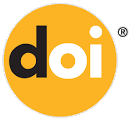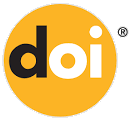KOMPARASI FRAMEWORK AGILE DENGAN METODE FUNCTION POINT DALAM PENGEMBANGAN APLIKASI MOBILE
Abstract
This study aims to evaluate the effectiveness of two Agile methodologies—Scrum and Extreme Programming (XP)—in the development of a mobile application for online examinations. In the context of rapidly changing requirements and the need for flexibility, Agile-based software development approaches are highly relevant, particularly for small to medium-scale projects. This research adopts a qualitative case study approach, supported by quantitative analysis using Function Point (FP) to provide an objective comparison of productivity between the two methods.
The results show that XP produced 85 Function Points in 120 working hours, achieving a productivity rate of 0.708 FP per hour. In comparison, Scrum produced 75 Function Points in 110 working hours, with a productivity rate of 0.682 FP per hour. Although the difference is relatively small, the data suggests that XP is slightly more efficient in delivering system functionalities within a given time frame. Qualitative findings from interviews and observations also indicate that XP is more adaptive to changes and promotes stronger technical collaboration among team members, particularly through practices like pair programming and continuous refactoring. On the other hand, Scrum offers a more structured workflow through sprint planning and backlog grooming, which supports better task management and documentation.
Based on these findings, it can be concluded that XP is more effective in project environments that require rapid iteration and high flexibility, while Scrum remains advantageous for structured project planning. The selection of methodology should be aligned with the project's characteristics, team dynamics, and development goals.Keywords
Full Text:
PDF 792-798 (Indonesian)References
L. Hakim, E. Lumba, and C. Danuputri, “Implementasi Pengujian Learning Management System Aplikasi Pembelajaran Jarak Jauh Berbasis Moodle Di Universitas Xyz,” Zo. J. Sist. Inf., vol. 5, no. 1, pp. 48–58, 2023, doi: 10.31849/zn.v5i1.12760.
A. Z. D. Nur Adiya, D. L. Anggraeni, and Ilham Albana, “Analisa Perbandingan Penggunaan Metodologi Pengembangan Perangkat Lunak (Waterfall, Prototype, Iterative, Spiral, Rapid Application Development (RAD)),” Merkurius J. Ris. Sist. Inf. dan Tek. Inform., vol. 2, no. 4, pp. 122–134, 2024, doi: 10.61132/merkurius.v2i4.148.
I. G. N. S. I Gusti Ngurah, J. Fernandes Andry, Siska, and K. Sentosa, “Penggunaan Framework SCRUM dalam Mencapai Optimasi Software Development,” KALBISCIENTIA J. Sains dan Teknol., vol. 10, no. 1, pp. 68–80, Mar. 2023, doi: 10.53008/KALBISCIENTIA.V10I1.2096.
M. R. Maulana, “Evaluasi Metodologi Waterfall Dan Agile: Studi Literatur Pada Sistem Perpustakaan,” J. Inform. dan Tek. Elektro Terap., vol. 13, no. 1, pp. 1287–1294, 2025, doi: 10.23960/jitet.v13i1.5900.
R. Parlika, R. R. Mahendra, M. R. A. R. Lutfi, R. K. Waritsin, and H. M. T. Ramadhan, “Pengukuran Kualitas Perangkat Lunak Website Pendataan Ekskul Siswa Menggunakan Function Point,” J. Ilm. Inform., vol. 11, no. 01, pp. 1–14, 2023, doi: 10.33884/jif.v11i01.5578.
E. Lumba, D. Widyaningrum, and A. Waworuntu, “Cost Estimation for Software Development Using Function Point Analysis Method,” IJNMT (International J. New Media Technol., vol. 11, no. 2, pp. 119–124, 2025, doi: 10.31937/ijnmt.v11i2.4006.
P. Sistem, Z. Ghinafikar, and M. A. Yaqin, “Jurnal manajemen teknologi informatika,” vol. 03, no. 26, pp. 26–44, 2025.
D. Longstreet, “Function Points Analysis Training Course,” Longstreet Consult. Inc. Acessed, vol. 2, p. 15, 2005, [Online]. Available: http://www.poli.usp.br/d/pmr2490/fp_training.pdf
B. G. Sudarsono, “Adopting SCRUM Framework in a Software Development of Payroll Information System,” Int. J. Adv. Trends Comput. Sci. Eng., vol. 9, no. 3, pp. 2604–2611, 2020, doi: 10.30534/ijatcse/2020/17932020.
DOI: http://dx.doi.org/10.30813/j-alu.v8i1.8780
Refbacks
- There are currently no refbacks.
p-ISSN 2620-620X
e-ISSN 2621-9840
Indexed By

Recommended Tools:
Dimension





